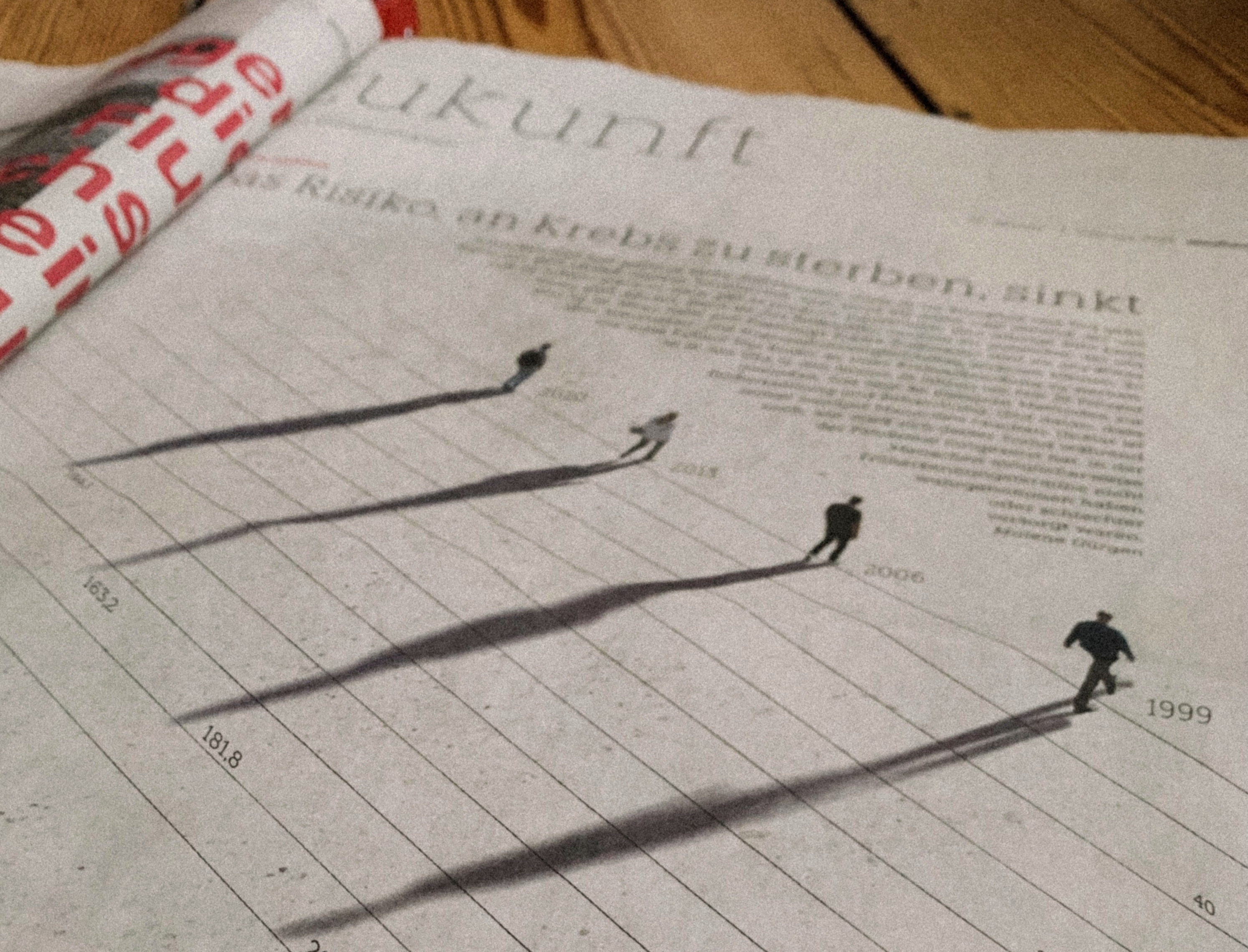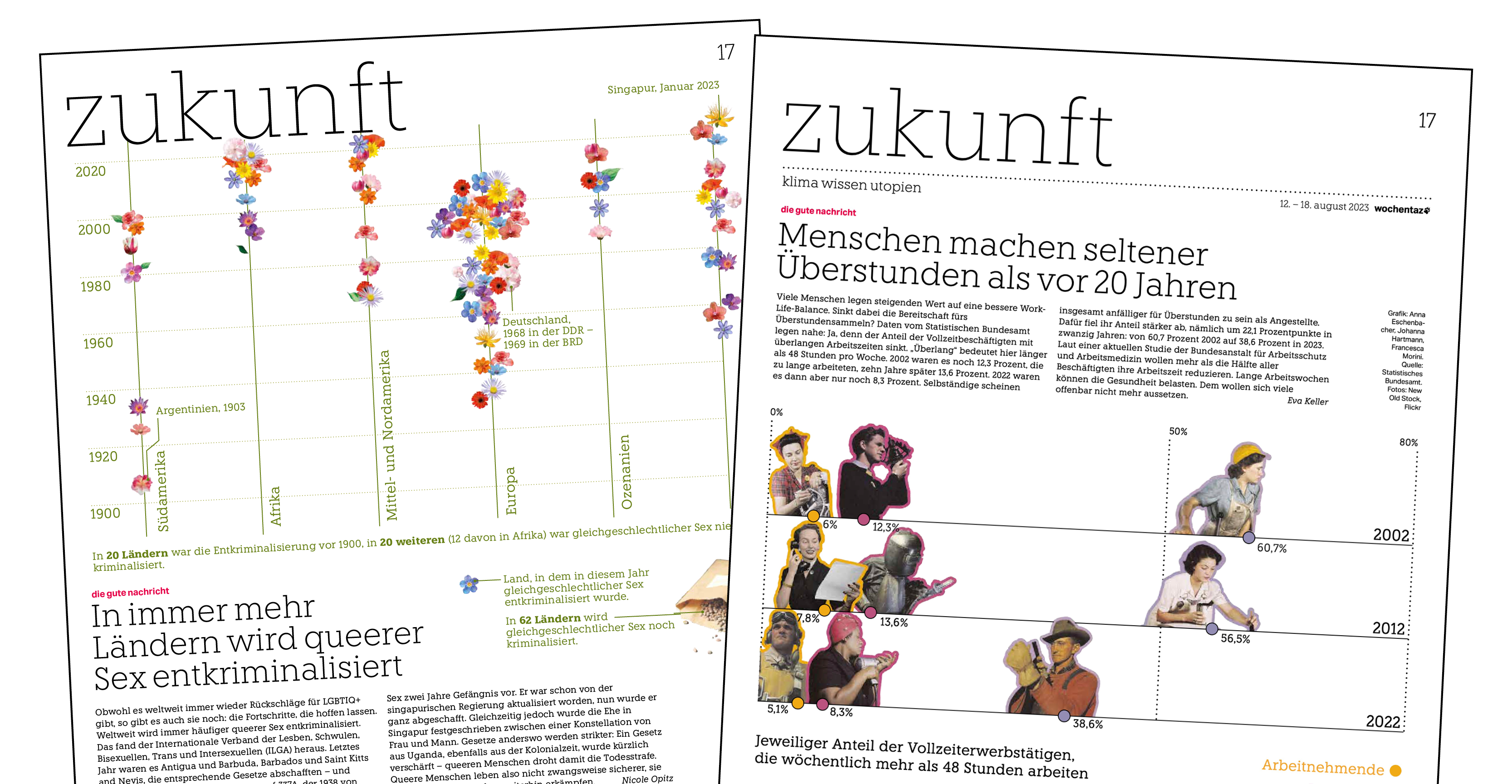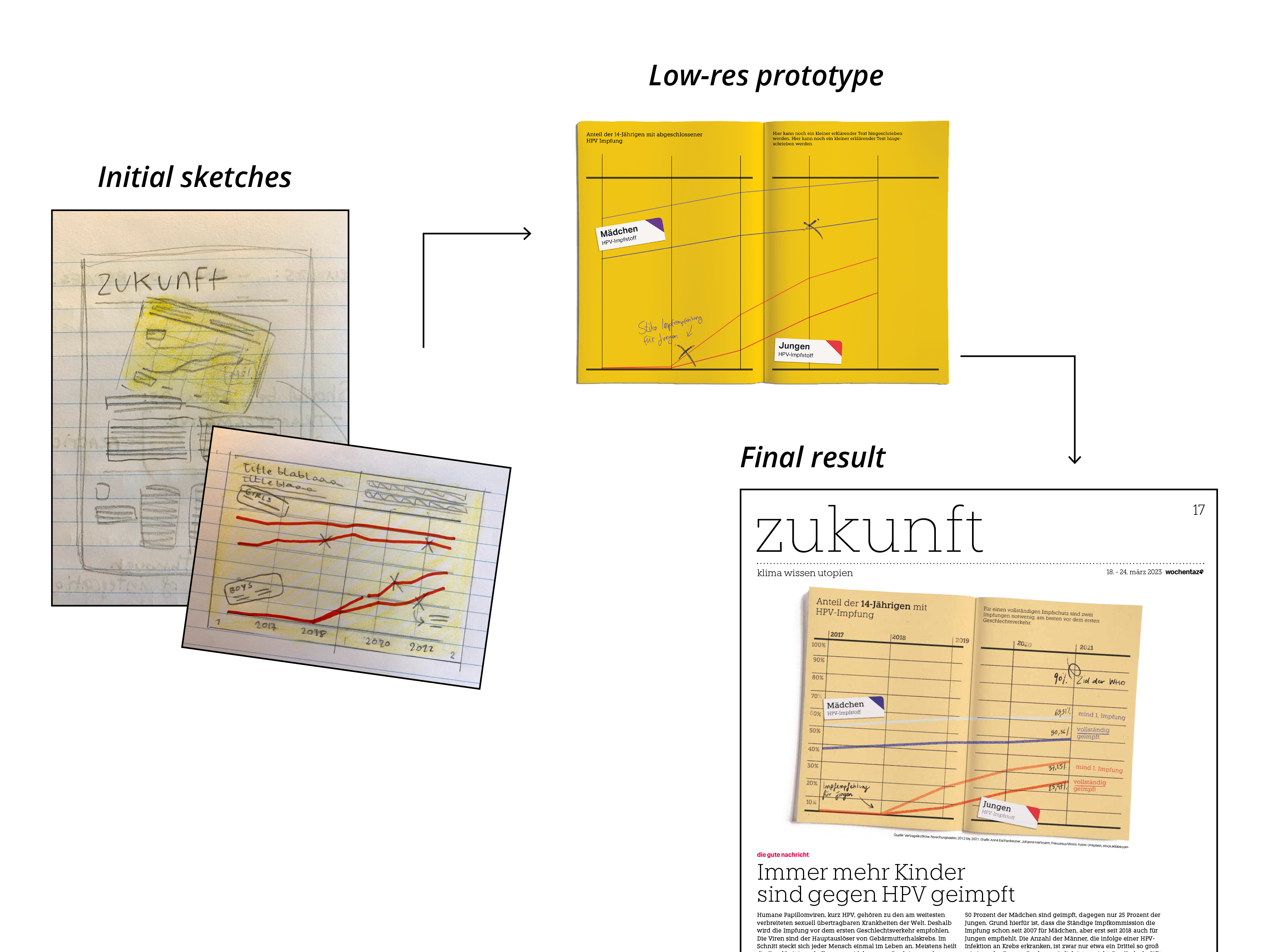die Gute Nachricht
"The Good News" is the weekly data visualization produced for the printed edition of taz, head of the Zukunft section.
Team and partners:
Anna Eschenbacher,
Johanna Hartmann,
Luise Strothmann,
Sophie Fichtner,
Yannik Achternbosch
Year:
2023
Every Saturday, readers can find die Gute Nachricht (the good news) on the cover of the Zukunft section, part of the wochentaz. The idea, developed by Luise Strothmann and Malene Gürgen together with their team, is to offer readers a positive take on an interesting and contemporary topic. Ranging from climate protection to the reduction of the gender-gap, each good news is introduced by a data visualization, blending photographic and design elements.

Balancing topics, metaphors, and data visualization
The biggest design challenge we face with die Gute Nachricht is to always find a delicate balance between the topic, its visual representation, and the chart type. In the past, we had to work with very sensitive topics like cancer, migration, and the legalization of human rights.
The two examples shown below are a good example of the type of interpretation work we do when working on the graphics. The issue on the left depicts the decriminialization of queer sex by showing each country in the form of a flower. We chose flowers to signal the fragile condition queer people have to face and the importance of granting equal rights, beyond politics and religious beliefs. Similarly, the visualization on the right shows data about working hours. The images of people are picked from old archival imagery and strive at representing diverse workers in different scenarios.

The pipeline: from manual drafting to digital design
Behind the scenes, the design process has to be extremely efficient due to the high turn-around. Each week we have to juggle between finishing the current graphic and work on the next concept. The image below shows the production pipeline of a standard issue, step by step The initial idea is usually sketched by hand and showed to the editorial team, who can ask for changes or express their ideas about the direction. Then a first low-fidelity digital draft is created, which again is used in a quick feedback round. Lastly, the graphic is finalized with the addition of labels, high-resolution assets, and filters.
